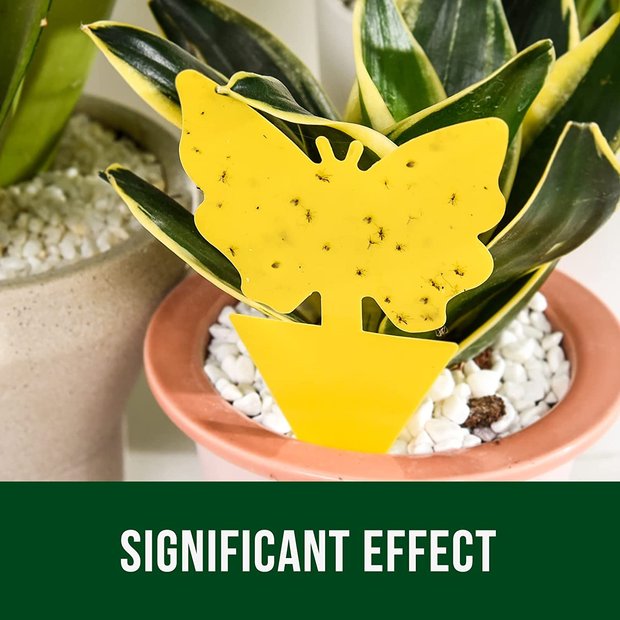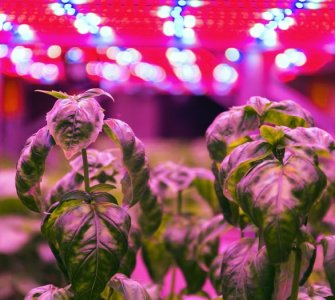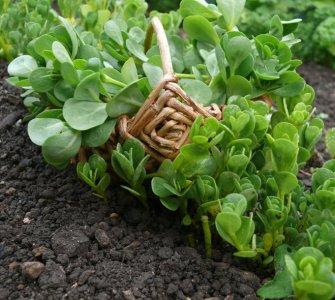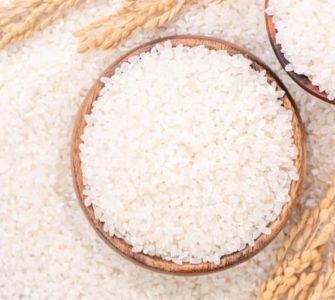Mining away beneath the soil’s surface are the young who cause quite a bit of damage. Above, the older crowd freely roams about, irritating the inhabitants of the house. Where there are a few, there could be hundreds if not more!
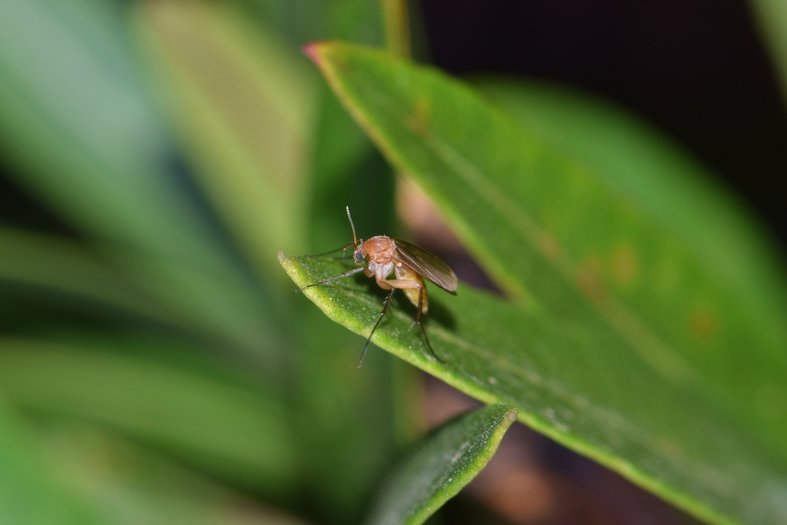
Gnats, those tiny flies belonging to the Sciaridae family. Where there are indoor plants, there are gnats. The two go hand-in-hand, and unfortunately, it’s something many indoor gardeners encounter.
An indoor plant doesn’t magically produce gnats. Gnats come from the outdoors and typically gain entry into a house by piggy-backing on plants. A good example is bringing a patio container plant indoors come winter time or introducing a new plant that was just purchased. Should any plant (whether new or brought in from outside) have gnat larvae in the soil, there’s assuredly going to be tiny flies within the home.
Gnat larvae feed on fungal spores within the soil. These spores are produced from dead decaying plant matter on the soil’s surface. The larvae also chew on a plant’s roots and may even find their way into the stems and leaves. Add overwatering to that, and it’s the ideal environment for the larvae to thrive.
Table of Contents
How To Get Rid Of Gnats On Indoor Plants
I have several plants in front of a big sunny window. My indoor herbal plants that include lavender and parsley happen to become host plants for gnats. I happened to notice the tiny flies bugging me as I sat nearby watching TV one night. Luckily, I knew to check every single indoor plant and take the appropriate action to manage and control gnats.
Cultural Controls
Prevention is the best way to avoid having a gnat problem. Here are a few tips on a good regimen to practice when it comes to indoor plants.
Practice Good Watering Habits
I am cautious not to overwater my indoor plants. Too much water and the plants not only invite trouble like gnats but also root rot.
Remove Plant Debris
It helps to have the right indoor gardening tools to maintain plants. I have a nifty little caddy that I keep them all in. Every tool has a purpose. One of the most important ones is the small hand rake I use to remove plant debris resting on top of the soil. That debris is very inviting for gnats.
Protect The Soil
I use a soil cover on many of my plants to give them aesthetic appeal and discourage gnats from setting up shop in my plant soil.
Quarantining New Plants
When introducing a new plant or one from outside, I quarantine it in a separate room for two weeks. This prevents the existing plant community from contracting diseases or pests that may accompany the new plant.
Avoid Recommendations On Sterilized Potting Mix
One of my dearest friends, who happens to be a horticulturist, shared with me how gnats can enter a home through infested potting mix. I was dumbfounded and shocked because I never realized that could happen.
I went in search of sterilized/pasteurized potting mix and it doesn’t seem to be attainable from retailers. After a bit more research, I found various methods to sterilize potting mix; however, sterilization kills the good organisms and that’s not something I want to do.
Monitor Plants Daily
I have plants in almost every room of my house. My patio has numerous container roses and along the fence are many of my highly prized roses. Should any of these plants become infested with gnats, it would spread quickly. It’s essential that I take action at the first sign of gnats flying around any plant.
If I spot gnats in or around indoor plants, I watch to see if they return to the plant’s soil. Sure enough, they do. Upon inspecting the soil, I notice a slight clear trail on the surface that resembles what a snail or slug leaves behind. This trail is evidence that gnat larvae are in the soil.
Treatment Options
What Is The Fastest Way To Get Rid Of Gnats?
Getting rid of gnats on indoor plants isn’t something that can be done with immediate results. An infested plant not only hosts the adult gnat, which flies in and around the plant, but it also most likely has gnat larvae throughout the soil. There is some spray on the market that claims it kills gnats and larvae with one application. But just how safe are those sprays?
What Can I Spray On Indoor Plants To Kill Gnats?
Neem oil is often the leading choice of sprays for a gnat problem. However, unless the plant’s soil is completely saturated with any spray, the larvae will not be destroyed. Sprays typically go no further than the surface and perhaps a half inch or so beneath. So, sprays are not the most effective means to end a gnat problem.
Sticky Traps
One of the easiest ways to capture adult gnats is by placing a sticky trap on the surface of the plant’s soil. I tried these in a few of my own plants, and they work really well. However, these traps stick out like a sore thumb in plants.
What Home Remedy Kills Gnats In Houseplants?
I’ve had many indoor gardeners tell me that they swear by the potato method. I haven’t used it myself, but what the heck, it may work, right? Place raw chunks of potato into the soil of the plant. The gnat larvae supposedly infest the potato by feeding on it. Remove the potato and dispose of it, gnat larvae and all!
Why Are My Indoor Plants Attracting Gnats?
Gnats aren’t necessarily attracted to indoor plants but rather that which lies on top or within the plant’s soil. Outdoor gnats readily enter homes through open doors. They may enter in hopes of finding a source of food (i.e., moist plant soil.)
Should the immediate area outside of an exterior door to the home be infested with gnats, opening the door almost guarantees uninvited guests.
Symptoms Of Plant Damage
Young plants or seedlings infested with gnat larvae often experience stunted growth. Mature plants may also exhibit a lack of growth or wilting. If the root damage is significant from gnat larvae chewing on them, a plant can die.
The peak season for gnats comes with warm, humid summers. Outdoors, gnats are abundant in the soil adjacent to home structures where it’s moist.
The Lifecycle Of Gnats
Female gnats will lay about 10 clusters of 30 eggs on the surface of soil that has ideal conditions such as moistness and decaying plant litter. The eggs hatch into larvae around day six, and for the next two weeks, the larvae feed on nearby fungal spores and chew on plant roots within the soil. They then advance to pupa (looks like larvae with wings), which lasts for up to ten days. It takes four weeks for a gnat to go from egg to a mature adult.
As the adult gnat emerges from the infested plant soil, they don’t fly very far because of their wing size. Those tiny little wings are not robust enough to carry them far. Indoors, they tend to stay around plants; however, they have been known to irritate homeowners who happen to be sitting nearby.
Adult (flying) gnats are harmless to humans (and plants) and don’t bite. They are, however, extremely annoying and may fly into cups of coffee, tea or land on food. Gnat larvae are capable of causing damage or death to an indoor plant.
Gnats Gotta Go!
I don’t mess around when it comes to gnats or any other pest on my indoor plants. In staying true to being planet-friendly with pest applications and treatments, I avoid pesticides and stick to being a bit more aggressive in preventative controls. When all else fails, I have to accept that there may be no other choice than to get rid of a badly infested plant.
